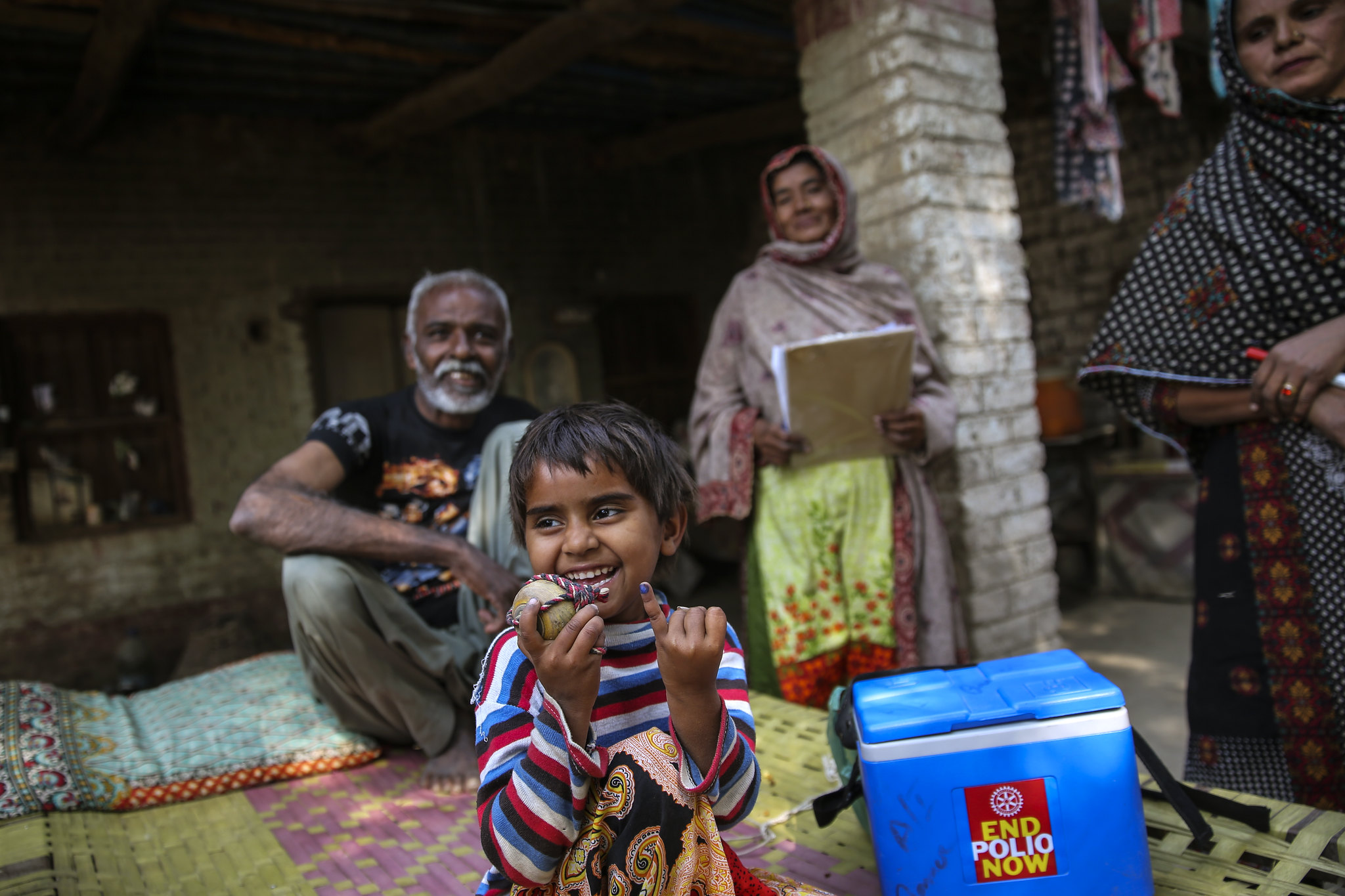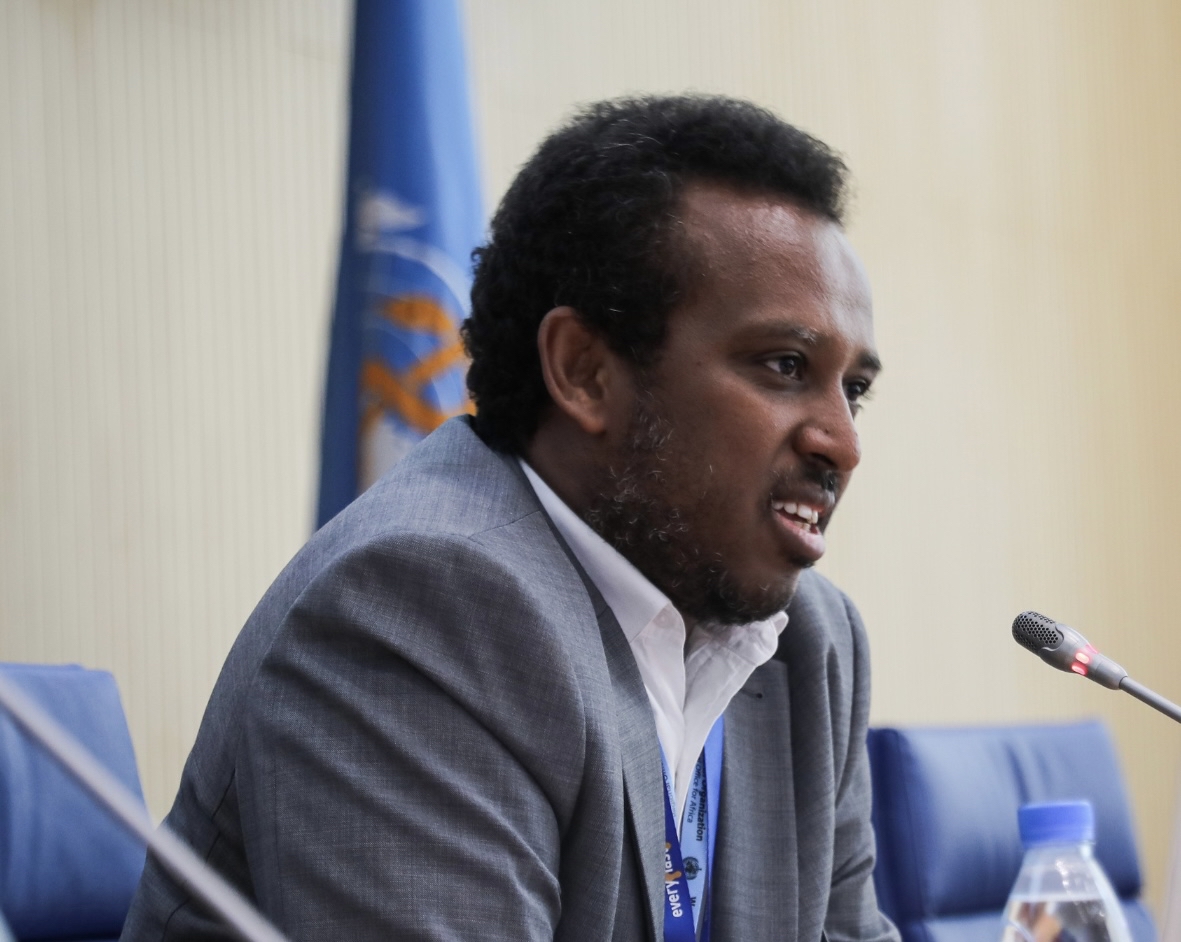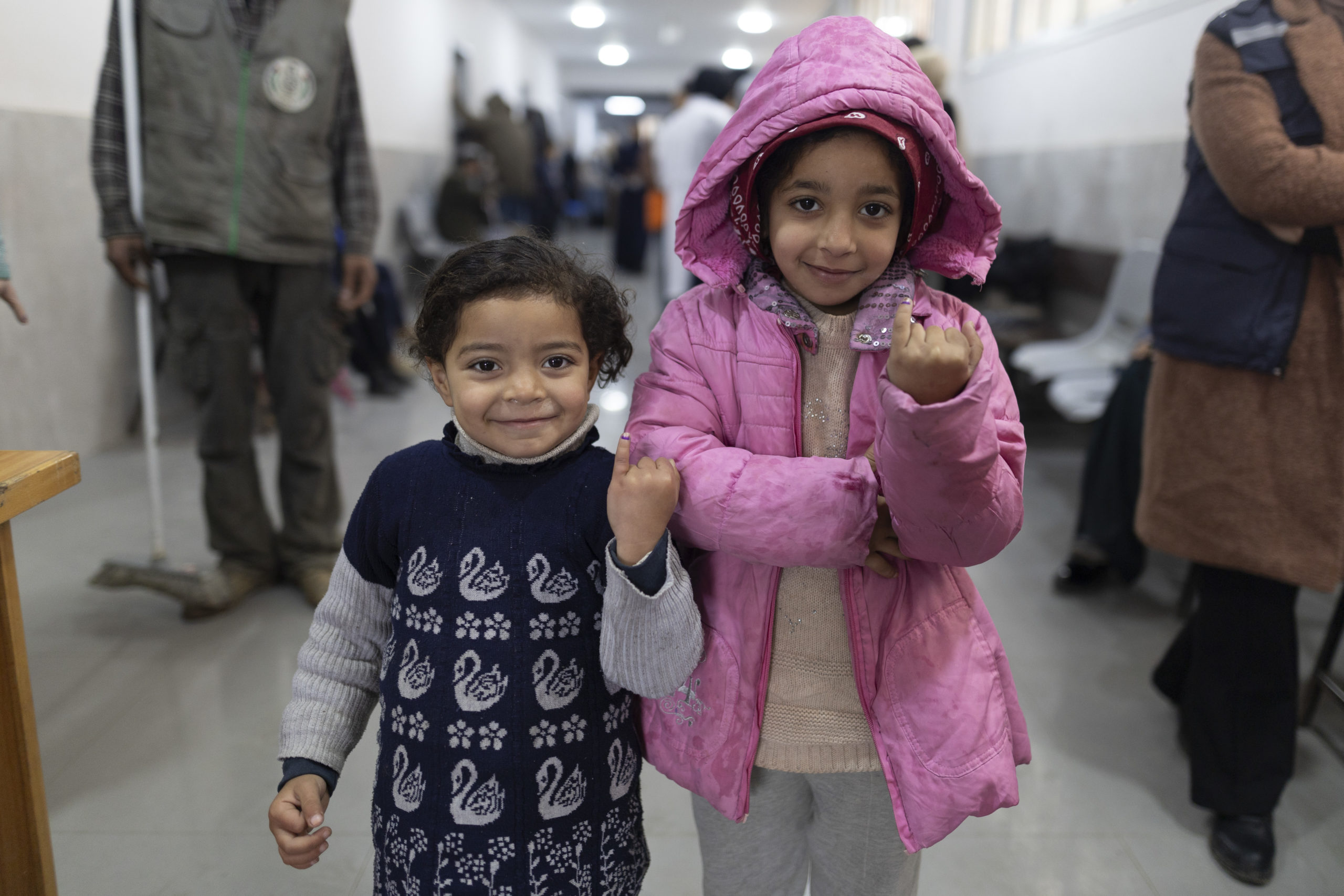Islamabad – An announcement over a loudspeaker from the mosque captures the attention of parents and their children. The voice announces that a polio campaign is taking place in the settlement and vaccinators will be coming to give two drops to children under five. Eight teams of two vaccinators each are already on their way, each starting their day from the farthest house in the community and making their way to the center.
In January, when Pakistan detected a positive wild poliovirus from a sewage sample with genetic links to the virus circulating in Afghanistan, the polio teams jointly conducted a detailed epidemiological investigation to trace the routes of virus movement and identify infected populations. In a matter of weeks, a response was planned and implemented, vaccinating around 6.37 million children from 13 – 17 February. In this article we take you to an Afghan refugee settlement in Islamabad, one of the 30 districts that were covered partially and where the outbreak response focused on mobile and cross-border populations.
The story looks at three important components of a campaign: vaccinators, vaccines and tally sheets.
Vaccinators: the backbone of programme
“Who is there”, asks a man from inside the house, in Pushto.
“Polio team,” responds Salma who speaks Pushto. “We are here to give polio drops. Do you have children under five at home?”
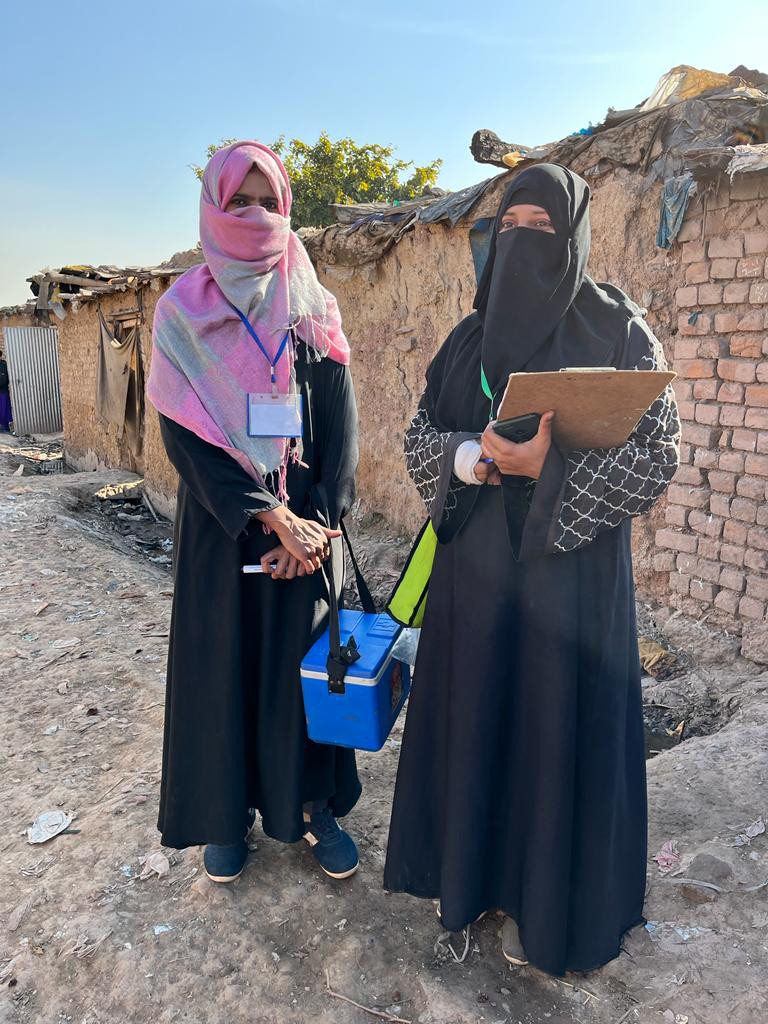
A tall man with a three-year-old boy in his arms, opens the door and welcomes the two vaccinators. Salma introduces herself and her team member Amina and asks the father if either of their children had received polio drops that day. The father confirms that in this round, his children did not receive any polio drops.
“Can I give them the polio drops?”, asks Salma.
The father responded back energetically, “Of course, you can! I want my child to grow up healthy!”
This is when Salma opens the blue box. Inside it are ice packs and vials of oral polio vaccine. She talks to the little daughter and asks her to open her mouth and gives her two drops from the vial.
After giving the drops, she marks the girl’s little finger. “You can show this incase anyone asks if you got the polio drops.”
Amina, on the other hand, fills out the tally sheet that she will later submit to her supervisor. If this information is incorrect, it can impact the overall operational coverage data for the campaign.
On leaving the house, Amina takes out her chalk and marks the door of the house with key information that will mention what day they visited, the number of children under five in the house and if there was any child with symptoms of acute flaccid paralysis.
One house done, now on to the next one.
Vaccines: two drops for every child
“It is not always this straightforward,” says Amina. “Sometimes parents are skeptical about the vaccine and don’t want us to vaccinate their children. I often take the drops myself to show them how safe the vaccines are. When they see me taking these drops, it helps us build confidence with them.”
The polio programme has a long history of systematically listening to community concerns and addressing them, often engaging influencers such as religious leaders, to underscore the safety and efficacy of polio vaccines. This has helped address vaccine hesitancy and reached more children, building their immunity against this debilitating disease. At this settlement, occasional announcements were made through the mosque, informing people that a polio campaign was taking place and encouraging them to vaccinate their children. The result of these efforts has helped the programme significantly reduce the number of refusals across the country.
The blue box Amina carries with her has a large red “End Polio” sticker and it can carry up to 20 vaccine vials, nestled between the ice packs. Each vial contains 20 doses. She pays special attention to the box making sure the temperature is always maintained and the vaccines are kept out of direct sunlight. Vials that have been used, those that are unused and the ones in use are all kept in separate bags in the cold box.
Tally Sheets: supporting real-time corrective actions
The third important piece of a polio campaign is the tally sheet. In rudimentary terms, it is a piece of paper with many tiny boxes that deliver a telling story of number and ages of children, those who were vaccinated, those who were missed, location where the campaign is taking place and number of doses delivered. In case of any refusals, the vaccinator mentions the reason for refusal at the back of the tally sheet. It tells how well an area has been covered and the remaining gaps.
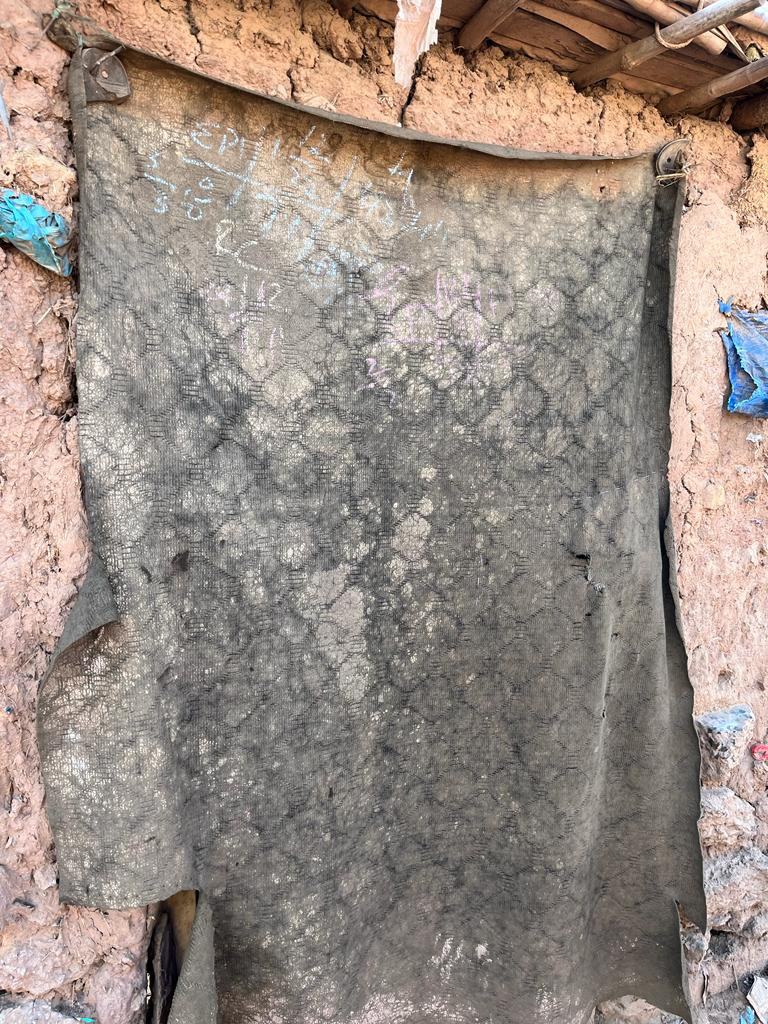
The authenticity of this data is a crucial component of operational coverage. It allows supervisors to identify gaps, present progress and advise corrective actions for vaccination teams. Each evening, this data is used to measure the campaign’s operational coverage.
In one of the houses where the vaccinators entered, the mother mentioned that the child had already been vaccinated. However, no finger of the child was marked , while the others each had a blue mark on their pinky finger. Taking no chances, the vaccinator took out the vial and gave the child drops and then marked the finger. The tally sheet cannot be marked unless a child has been vaccinated and finger-marked.
Getting past the finish line
Up until April, Pakistan has conducted four polio vaccination campaigns. With the support of 390,000 polio workers, almost 43 million children under-five were vaccinated during a five-day nationwide vaccination campaign. There are multiple campaigns planned for the year ahead, requiring hours of strategic and evidence-based planning led by the national and provincial emergency operations centres.
Leaving nothing to chance during this last 100 meter dash towards eradication, the programme has also started implementing innovative interventions, such as the nomad population mapping and vaccination of high-risk mobile populations, engaging public health students for monitoring campaigns through the Lot Quality Assurance Sampling survey and the co-design initiative that engages women polio workers to develop solutions for improving campaigns and identifying potential livelihood opportunities for them in the future.
For Amina and Salma, the conclusion of the February round meant that children under five had received the vaccine to build strong immunity against the poliovirus. However, the journey to eradication continues. After a short break, the programme will begin working on validating the next set of microplans. All of this work is essential to ensure that the virus really finds no place left to hide and no child left to paralyze.
By Rimsha Qureshi,
Communications Officer, GPEI Hub Amman
